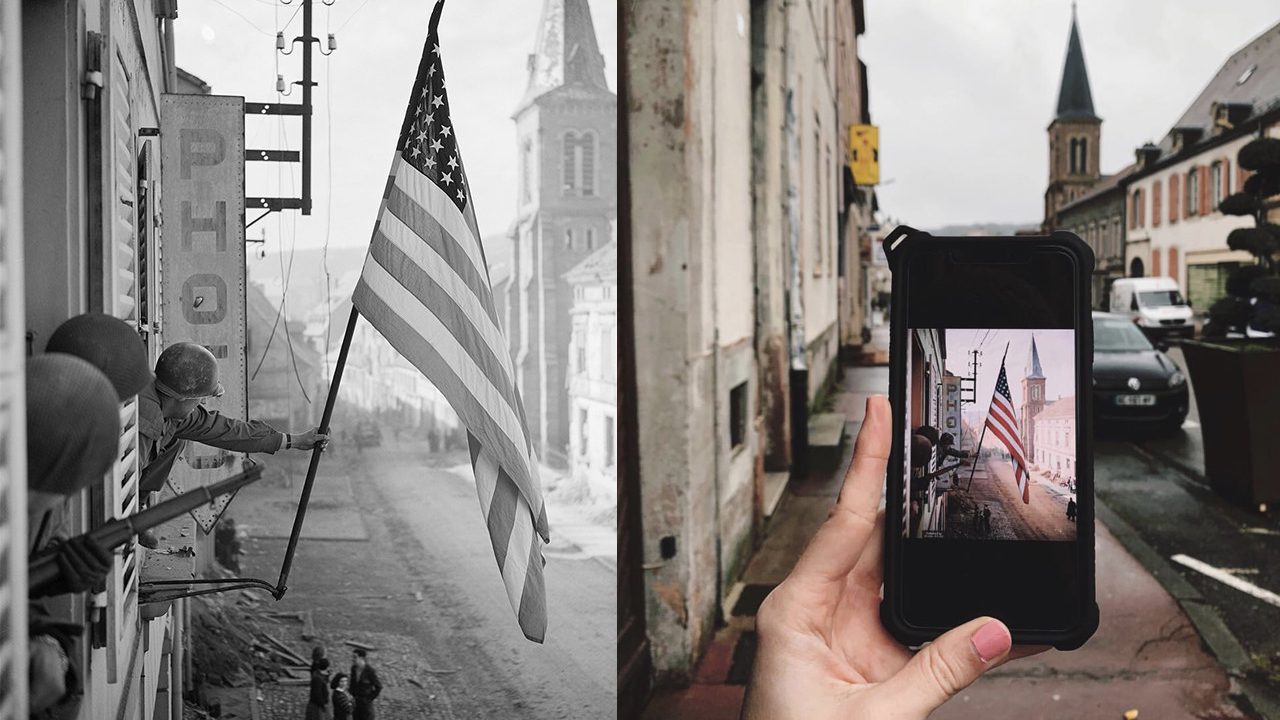Colorizing photos is a lonely process. Before I even begin the colorization itself, I spend hours – or even days – reading, researching, studying, and finding stories. It is time-consuming, sometimes emotionally draining, but just as enjoyable. My work gave me the opportunity to meet incredible people: teachers, renowned historians, authors; and some became close friends. But, even though all these encounters mean a lot to me, none of them are or were able to prepare me for the moments when I have the opportunity to talk to relatives of people portrayed in the photos that I colorized. It is as if those “historical personalities” – strangers who become so close to me, in a weird way, since I spend so many hours in “their company”, restoring and applying colors to their faded photos – jump off the screen and materialize in front of me. I cannot describe the feeling. This is what happened when Frank Garahan, son of Captain Thomas H. Garahan – portrayed in one of the dozens of World War II photos that I restored, and which soon became one of my favorites – got in touch via Twitter.
When war broke out, Thomas H. Garahan was 28 years old, married for two years with one daughter, Kathy, and his wife, Kate, pregnant with their second child. He was older than most of his troops, had completed officer training and reached the rank of Captain in the 398th Regiment, Company E. Writing letters to Kate was a habit he practiced whenever possible, and fortunately, Kate saved all of his correspondence while overseas.

A few days later, Tom continued his account of the 100th Division’s arrival in France in October of 1944 in a letter to Kate.
After reading these letters (quite a few times, I imagine) and his father’s raw first-person accounts, Frank decided to embark on a journey and retrace his footsteps: “In 2015, I began to contemplate a trip that would retrace the entire combat tour of my father and the 100th Infantry Division in 1944-1945. I made several earlier trips to Germany and France and have even been to Bitche, France in 2005. To accomplish an accurate retracement I would need to employ different modes of travel along the way: air travel across the Atlantic Ocean instead of sailing, but beyond that, I was as precise as possible in sticking to the actual route.”
You can read his entire description of the journey here, but I’d like to focus on a particular bit to explain how our worlds collided – Mine, Captain Garahan’s and Frank’s – so many decades later.

On December 13, Tom’s company is part of a crushing offensive against unrelenting German positions as recorded in the History of the 398th Regiment:
Tom’s action on December 13-14 earns him the award of the Bronze Star Medal. On March 16th at 7:30 am, E Company, followed by the second battalion, entered the streets of Bitche. The townspeople quickly became aware that liberation was at hand. Among the first to greet the troops was George Oblinger, innkeeper and proprietor of Auberge le Strasbourg. He brought out the American flag that his wife Maria had secretly created and presented it to Captain Thomas H. Garahan.

Soon after receiving the flag, Tom, with a few members of his company, took it to a second-floor apartment above a shop, just a few doors away. A war correspondent photographer was present and took the photo. And this is where I enter the story.

I colorized the original black and white photograph back in 2016, when a fellow colorist, Doug Banks, sent it over. That photo means so much to me that it has become a habit to republish it every year on my social media channels. This is what I did yesterday, December 13th 2020, not knowing what would happen a few hours later.
I have so much to tell you about the story and your involvement in the history. Please reach out to me to let me know how to share. Thank you for all you have done. Frank
— Frank Garahan (@fgarahan) December 13, 2020
I was ecstatic. As soon as I saw the tweet, I sent a private message to Frank, and he explained how he first came across the colorized photograph: “The short version is our family was always enamored with the photo but our father rarely spoke about it. After he died in 1988 we engaged his troops at reunions and when you colorized the photo it brought new life to the event and I became determined to learn more. This led to my trip and how the town has embraced your artwork as the most important milestone of the legacy of a history going back centuries. You should be so proud of your contribution to the history of Bitche France.”
So I told Frank that after a week in which I let the imposter syndrome take over a few times, his message was everything I needed. I think the word here is serendipity. People often say that my work transforms lives. I dare to contest and say that I am the one who undergoes a profound transformation every time I have the privilege of hearing and telling these stories. If there is someone who spends a lot of time immersed in the past, it is me, but now I know that sometimes when past and present collide, amazing things can happen.

